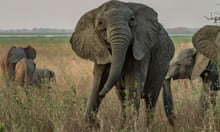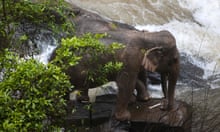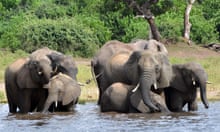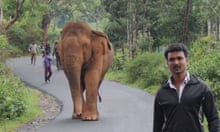One of Africa’s oldest and largest elephants has been killed by poachers in Kenya, according to a conservation group that protects a dwindling group of “big tuskers” estimated to be as few as 25.
Richard Moller of the Tsavo Trust said Satao II, about 50 years old, was found dead on Monday and was believed to have been shot with a poisoned arrow. Two poachers believed to be responsible for the killing were apprehended not long after his carcass was spotted in routine aerial reconnaissance of the Tsavo national park.

“Luckily, through the work we do with the Kenyan Wildlife Service, we were able to find the carcass before the poachers could recover the ivory,” said Moller.
The elephant, named after another giant killed in 2014, was beloved by visitors to the park. Moller said about 15 tuskers, named for impressive tusks that nearly scrape the ground, remained in Kenya out of an estimated worldwide population of 25. “They are icons, they are ambassadors for elephants,” he said.
Satao II’s death comes two days after a KWS officer was killed during an anti-poaching incident in the park, the second to die in less than a month at the hands of poachers, according to the wildlife authority.
The number of African elephants has fallen by about 111,000 to 415,000 over the past decade, according to the International Union for Conservation of Nature.
The killing shows no sign of abating, with approximately 30,000 elephants slaughtered for their ivory every year, mainly to satisfy demand in the Asian market for products coveted as a traditional medicine or as status symbols.
Moller said one of Satao II’s tusks weighed 51.5kg and the other 50.5kg. “I am pretty gutted really. This particular elephant was one that was very approachable, one of those easy old boys to find. Many are the others are much more difficult to see,” Moller said. “He has been through lots of droughts and probably other attempts at poaching.”
The Tsavo covers about 16,000 sq miles (42,000 sq km) and is a major challenge for rangers to patrol.
The Tsavo Trust helps monitor the elephants through aerial and ground reconnaissance, and works closely with KWS. Moller praised the “swift action” that led to the arrests.









